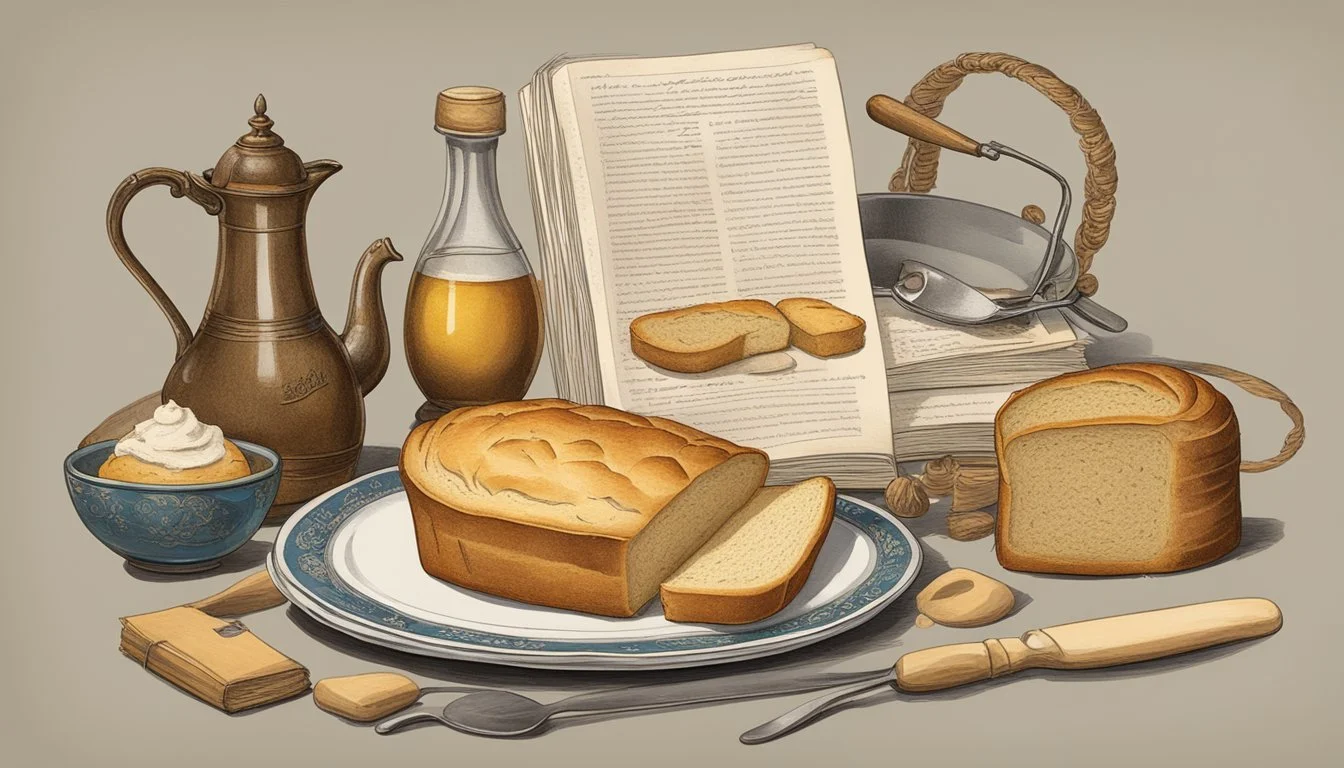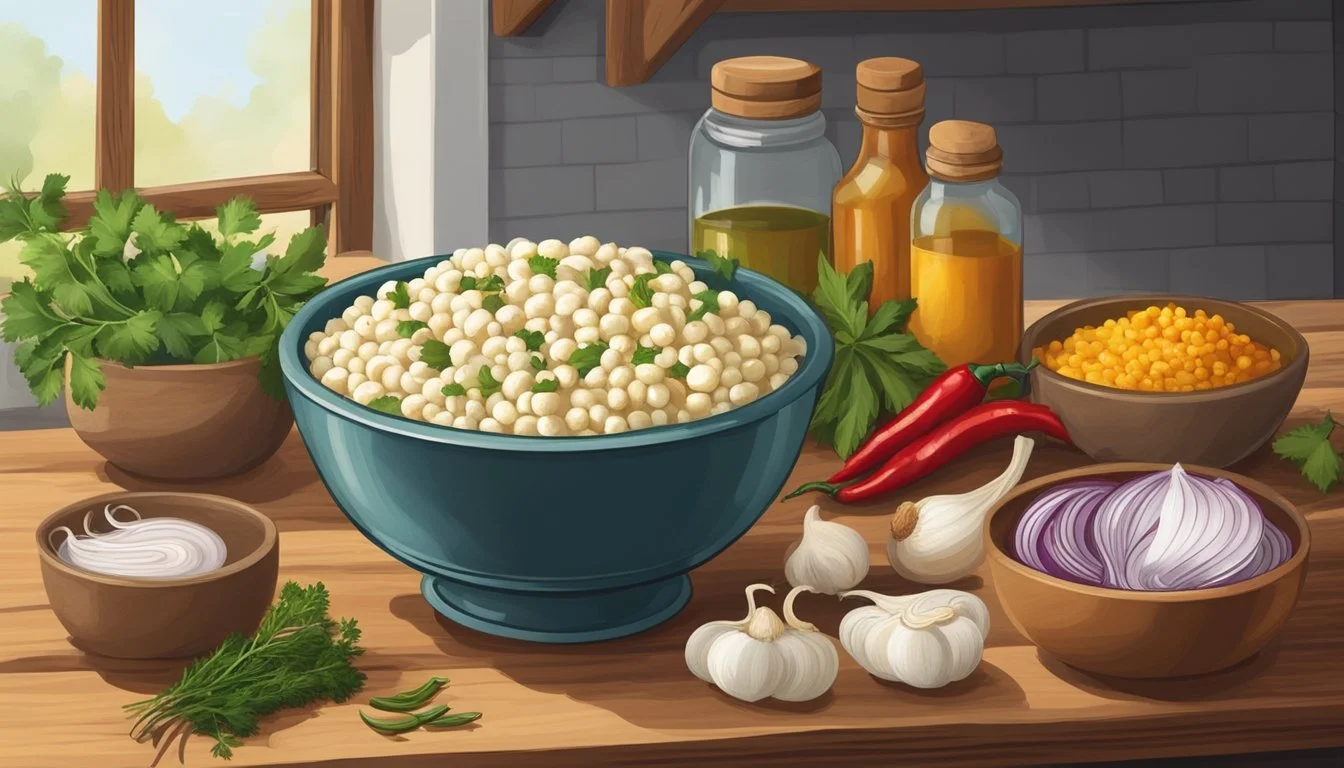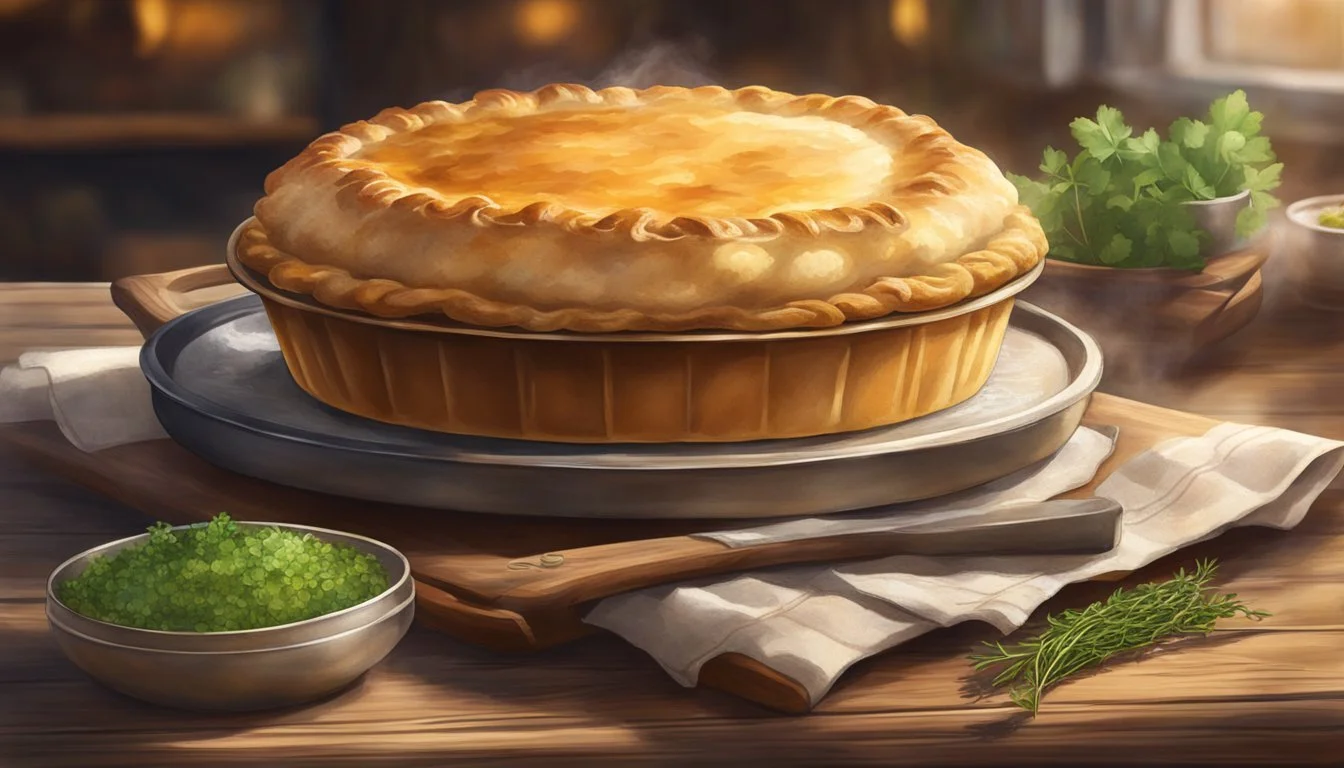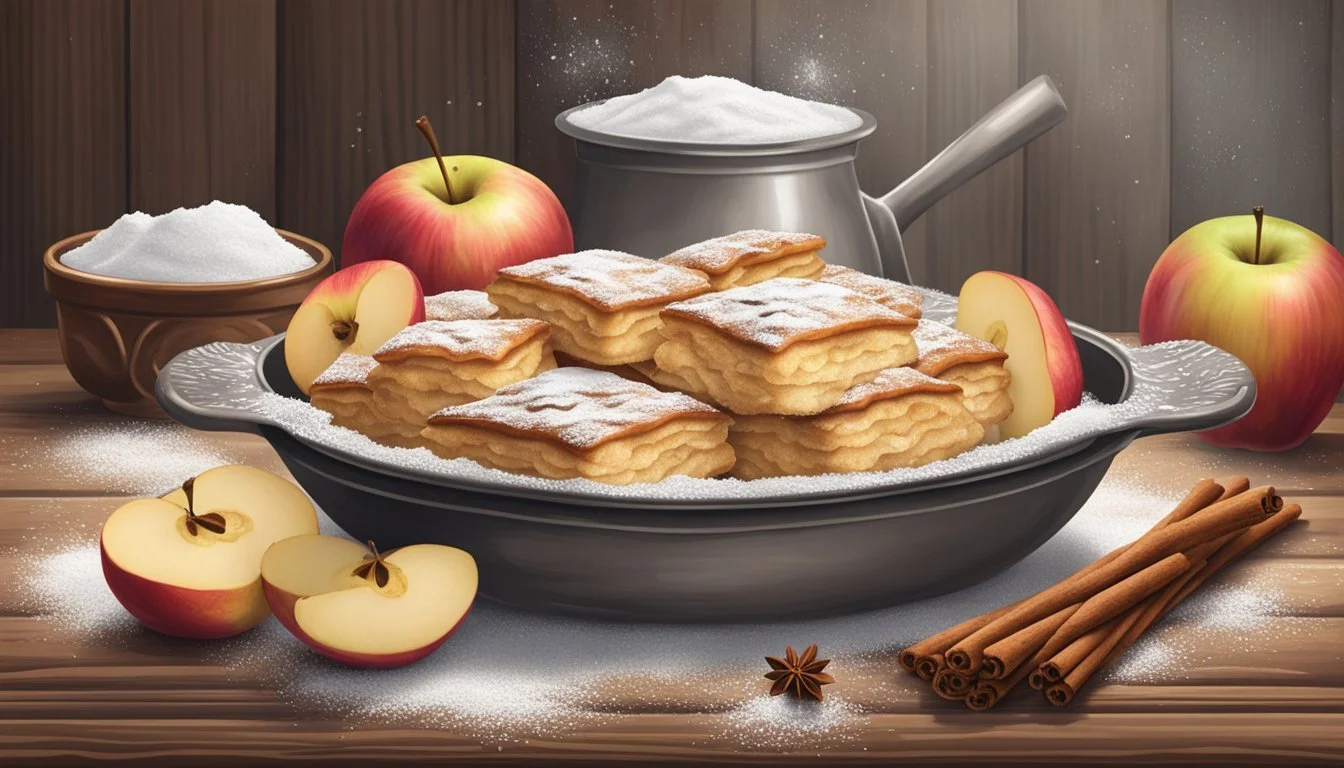10 Specialty Food Once Common in America
Forgotten Culinary Gems
Exploring the culinary landscape of America, one can uncover a myriad of specialty foods that were once staples in the diet of earlier generations. These foods reflect the diverse cultural tapestry and historical influences that have shaped American cuisine throughout the years.
Understanding the significance of these once-common specialty foods allows us to appreciate how culinary practices and preferences have evolved over time. From unique meat dishes to regional delicacies, these foods offer a window into the past and highlight the changing trends in American food culture.
1) Scrapple
Scrapple, traditionally known as Pannhaas by the Pennsylvania Dutch, is a specialty dish composed of fried pork scraps and trimmings. These are combined with cornmeal and wheat flour, often including buckwheat flour for added flavor.
Early recipes for scrapple included pig's haslet, such as the heart, liver, and other edible organs. These ingredients were boiled until tender.
Spices play an essential role in scrapple's distinctive taste. Despite its humble origins, scrapple has found its way into many American diners and restaurants.
Scrapple reflects a resourceful approach to food, minimizing waste by using scraps and lesser-used parts of the pig. Its popularity continues today, showing the lasting appeal of this traditional food.
Findings suggest scrapple provides a substantial amount of vitamins and minerals due to ingredients like pork liver and skins, including iron. However, its sodium content can be high because of the seasoning.
Scrapple's relevance grew with the gourmet food movement and whole-animal butchering trends, bringing renewed interest to this dish. Its unique combination of flavors and historical significance makes it a noteworthy food that was once common in America.
2) Hasty Pudding
Hasty Pudding is a traditional American dessert that has origins dating back to colonial times. Initially, it was made using basic ingredients such as flour or cornmeal, milk, and a sweetener like sugar or treacle.
In colonial America, this dish was especially popular in New England where corn became part of the staple diet. The preparation involved scalding milk in a pan and then adding cornmeal or flour while the milk was still hot.
Spices such as nutmeg or cinnamon were often introduced to enhance the flavor. Some variations included the addition of raisins. The mixture would then be poured into a pie tin or cupcake tins and baked at 350 degrees for about 30 minutes.
Before its adaptation in America, the British originally made Hasty Pudding as a porridge using wheat flour or oatmeal, but adapted the recipe to cornmeal upon settling in the New World due to the scarcity of wheat and oats.
The American version of Hasty Pudding eventually became a celebrated comfort food. Its simplicity and the availability of ingredients made it a common choice for families across the colonies. This dish remains a nostalgic favorite reflecting America's culinary heritage.
3) Sally Lunn Bread
Sally Lunn Bread is a classic American bread with origins dating back to the colonial era. It is believed to have been brought over by British colonists who cherished its unique qualities and comforting taste. The bread has a rich, buttery flavor and a light, cake-like texture.
The bread's preparation involves simple yet distinctive steps. Warm milk or cream is typically used, which is mixed with yeast to give the bread its characteristic rise. The addition of eggs and butter adds to its richness, making it different from standard bread recipes.
After combining the ingredients, the dough is placed in a greased bowl and left to rise. It is then baked, often in angel food cake pans, which give it its traditional shape. This bread is enjoyed both as a savory or sweet treat, often served with butter or jam.
Sally Lunn Bread remains a beloved heritage recipe, reflecting the culinary traditions of early America. It stands out not just for its taste but for its historical significance, reminding us of the foods cherished by early American settlers.
4) Johnnycakes
Johnnycakes, also known as hoe cakes, have a storied history in American cuisine. They are essentially cornmeal flatbreads, often associated with early American settlers and Indigenous peoples.
The basic ingredients for johnnycakes include cornmeal, water or milk, salt, and sometimes a bit of sugar.
The preparation is straightforward. The dry ingredients are mixed together, then combined with boiling water or milk to form a thick batter.
Cooking johnnycakes involves frying small dollops of the batter on a hot, greased skillet until they are golden brown on both sides.
The taste of johnnycakes can be described as slightly sweet and hearty, making them a versatile dish. They can be served with butter, honey, or syrup for breakfast, or as a side dish with savory meals.
Johnnycakes are not just a historical curiosity but are still enjoyed by many today. Their simple, robust flavor and ease of preparation keep them a beloved staple in various regions.
5) Shoo-fly Pie
Shoo-fly pie is a distinctive dessert from Pennsylvania Dutch country. This pie is particularly associated with Moravian, Mennonite, and Amish communities. Its origins can be traced back to the 18th century.
The pie consists of a molasses-based filling. Molasses lends a rich, deep flavor and is combined with brown sugar, flour, water, and baking soda. This sticky mixture forms the base layer.
A crumbly topping of flour, sugar, butter, and cinnamon is added. The topping gives the pie its signature texture contrast, creating a delightful balance between the gooey filling and the crisp topping.
Shoo-fly pie is often baked in an unbaked pie shell. Baking brings everything together, resulting in a pie where the filling turns bubbly and the topping becomes golden brown.
In some recipes, the pie crust is pre-frozen to prevent puffing during baking. Parchment paper and pie weights can also be used to maintain the crust's shape. Shoo-fly pie is a charming relic of early American baking traditions.
This dessert is a testament to the resourcefulness of Pennsylvania Dutch bakers. Its simplicity and rich flavors have allowed it to endure through generations, remaining a beloved treat.
6) Hominy
Hominy, a staple in both Native American and Southern cuisine, has a unique place in America's culinary history. This type of corn is treated through a process called nixtamalization, where the grains are soaked in an alkaline solution, typically limewater. This process removes the hull and enhances nutritional value, imparting a distinct texture and flavor.
Native Americans were the first to cultivate and prepare hominy. The name "hominy" is derived from the Powhatan word "rockahominy." Eventually, European settlers adopted this indigenous food, incorporating it into their own diets. Hominy became particularly integral to Southern and Appalachian cuisines.
Ground hominy produces grits, a beloved dish in the Southern United States. Corn grits, a breakfast staple, are often enjoyed with butter, cheese, or even shrimp. Similarly, in Latin America, dried hominy flour, known as "maseca," forms the basis for traditional foods like arepas and tamales.
Besides its culinary uses, hominy also holds ceremonial significance in some Native American cultures. In modern American kitchens, hominy can be found canned or dried and is used in an array of dishes ranging from soups and stews to casseroles.
The distinctive texture and nutty flavor set hominy apart from regular corn, making it a versatile ingredient worth exploring.
7) Mutton Pie
Mutton pie, once a staple in American households, is a savory dish made from diced mutton meat, commonly lamb or goat. This hearty pie is seasoned with salt, pepper, and a variety of herbs and spices to elevate its flavor profile.
The filling typically includes vegetables such as onions, carrots, and potatoes. These ingredients are mixed with the seasoned mutton and enclosed in a golden, flaky pastry crust, providing a satisfying bite.
Historically, mutton pie was popular due to its affordability and the availability of mutton. It was a common comfort food during the colder months, offering a warm, filling meal.
In regions like New Jersey, mutton pie held a special place in local culinary traditions. Memories of these pies, especially from places like Taylor's Bakery in Paterson, still linger among older generations.
Though less common today, mutton pie remains a nostalgic dish that captures the essence of early American cuisine. Its enduring legacy can still be tasted in traditional recipes and special occasions.
8) Beaten Biscuits
Beaten biscuits originate from the Southern United States and date back to the 19th century. These biscuits differ significantly from the soft, fluffy biscuits commonly known today.
The dough is beaten, typically with a rolling pin or hammer, for about 30 minutes. This extensive beating process gives the biscuits a hard, cracker-like texture.
Beaten biscuits are known for their simple ingredients: flour, lard, salt, sugar, baking powder, and water. They are pricked with a fork before baking, resulting in a distinctive appearance.
Historically, these biscuits were treasured for their long shelf life, making them ideal for long journeys. In the Northeast, they are often compared to "sea biscuits" or hardtack.
Despite their labor-intensive process, beaten biscuits are a cherished part of Southern culinary heritage. They appear in traditional recipes and are particularly associated with Maryland cuisine.
9) Posset
Posset, once a popular remedy and dessert in colonial America, was a warm, creamy drink made from milk curdled with wine or ale. This mixture often included spices like nutmeg and cinnamon, adding a flavorful depth.
Historically, posset was believed to have medicinal properties. People consumed it to ward off colds and other ailments. It was particularly common in the colder months when warmth and comfort were sought.
The preparation involved heating the milk until it curdled and forming a rich, custard-like layer. The curds and liquid were then separated, and the resulting mixture was usually served hot.
Posset’s popularity began to decline in the 19th century, as other desserts and hot beverages became more fashionable. Though no longer common, modern takes on posset sometimes appear in historical-themed menus or specialty food events, offering a nostalgic taste of days past.
10) Apple Pandowdy
Apple Pandowdy is a traditional American dessert with roots in Colonial times.
This dish features sliced apples, typically mixed with spices like cinnamon and nutmeg, layered in a baking dish. It's then topped with a flaky crust, often pie dough or biscuit dough, and baked until golden brown.
The name "pandowdy" likely refers to the dessert's rustic appearance. As it bakes, the crust is usually pushed down into the filling, creating a satisfyingly “dowdy” look.
Apple Pandowdy is known for its warm, comforting flavors and simple preparation.
It's a versatile recipe that can be adapted with various types of apples or additional spices to suit different tastes. This makes it a favorite among those who appreciate classic American desserts.
Historical Context of Specialty Foods
The historical development of specialty foods in America is deeply intertwined with economic and social trends, as well as regional culinary traditions.
Economic and Social Factors
The economic boom of the early 20th century allowed for greater diversity in diets. As industrialization progressed, more people moved to urban areas, which increased demand for diverse, convenient foods.
New technologies like refrigeration and transportation advancements also played a role. They made it possible to keep foods fresh over longer distances, expanding the variety available to consumers.
Immigration introduced culinary traditions and ingredients from various cultures. For instance, Italian immigrants popularized pasta dishes, while German immigrants introduced sausage varieties.
Regional Variations
Different regions in America developed their own unique specialty foods based on local resources and cultural influences. Louisiana's jambalaya, for example, is a fusion of Spanish and African culinary traditions, utilizing locally available ingredients like rice, peppers, and sausage.
The Midwest saw the rise of hearty dishes like bison burgers, which reflected the rural, agrarian lifestyle. Meanwhile, New England offered clam chowder, a dish influenced by its coastal geography and maritime economy.
In the Southwest, Mexican and Native American culinary practices combined to create dishes like chili con carne. Each of these regional specialties contributes to the vibrant tapestry of American cuisine, showcasing the diversity and adaptability of local food traditions.
Cultural Significance and Traditions
Understanding the cultural significance and traditions surrounding specialty foods that were once common in America provides insight into how they shaped social and culinary customs.
Festivals and Celebrations
Many formerly popular American foods played a pivotal role in regional festivals and celebrations. For example, black currants were central to harvest festivals in the early 20th century. Towns would host currant-themed fairs where people enjoyed jams, pastries, and beverages made from this fruit.
Sorghum molasses served as a staple at fall festivals in Appalachian communities. Families gathered to process sorghum cane, making molasses, candies, and baked goods. This tradition not only provided sustenance but also fostered community bonds.
Specialty foods were often featured in holiday meals. Shoofly pies, rich with molasses, were traditional at Pennsylvania Dutch gatherings. These foods were more than nourishment; they anchored communal memories and seasonal celebrations.
Immigrant Contributions
Immigrant groups brought with them ingredients and recipes that became integral to American food culture. The popularity of shrimp and grits, for instance, can be traced back to West African influences combined with Native American cornmeal cuisine. This dish became a Southern staple, especially in Lowcountry regions.
Eastern European immigrants introduced dishes like borscht and pickled herring. These foods, though viewed as exotic by early Americans, found a place in regional cuisines and were celebrated at cultural festivals.
Immigrant communities often maintained their culinary traditions, influencing the broader American palate. Italians introduced dishes like pasta e fagioli, which became widespread among American households during the 20th century.
Cultural foods provided a way for immigrants to preserve their heritage while integrating into American society, enriching the nation's culinary diversity.
Revival and Modern Adaptations
In recent years, many forgotten foods have found their way back into American diets. This resurgence has been driven by a growing interest in culinary heritage and traditional farming practices.
Black Currants: Once banned in the United States due to their role in spreading white pine blister rust, black currants are now making a comeback. Farmers are cultivating disease-resistant varieties, and black currant jams and syrups are becoming popular again.
Three Sisters Crops: Corn, beans, and squash, known as the "Three Sisters," are being embraced for their historical and nutritional value. Community gardens and farms are reintroducing these crops, which were staples in Native American agriculture, promoting sustainable farming techniques.
Heirloom Varieties: Heirloom vegetables, such as heritage tomatoes and non-hybrid beans, are gaining attention. These varieties, celebrated for their unique flavors and textures, are now featured in farmers' markets and specialty grocery stores.
Artisan Breads and Baked Goods: Traditional baking techniques are seeing a renaissance. Sourdough, rye, and other heritage grains are in demand as people seek out breads made with natural fermentation processes and locally sourced ingredients.
Caribbean Flavors: Caribbean cuisine is experiencing a revival. Influenced by increased media exposure, dishes such as jerk chicken and plantain-based meals are being adapted by chefs across the country. This trend celebrates diverse cultural influences and introduces vibrant flavors to new audiences.
Historic Sweets: Desserts like devil's food cake and baked Alaska are being rediscovered by modern bakers. These classic treats are being updated with contemporary twists, maintaining their nostalgic appeal while catering to current tastes.
The revival and modern adaptation of these foods reflect a broader movement toward valuing culinary diversity, sustainability, and historical roots.










